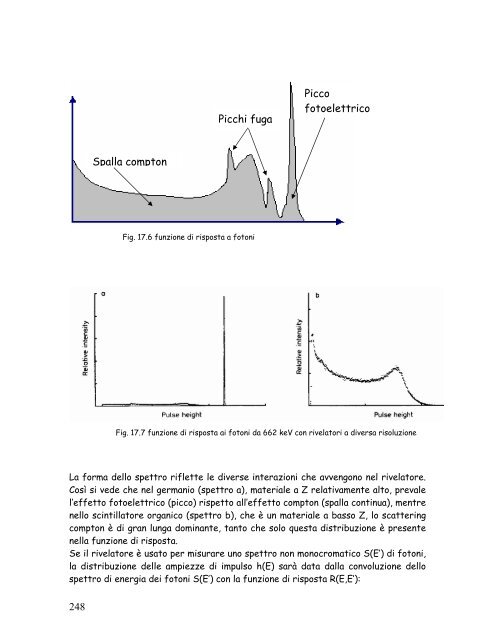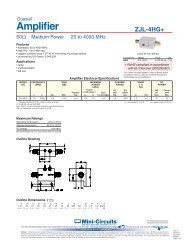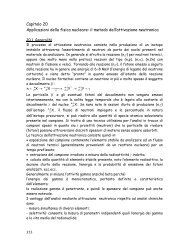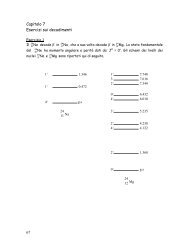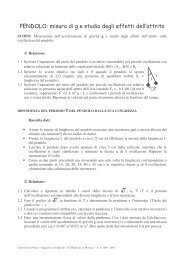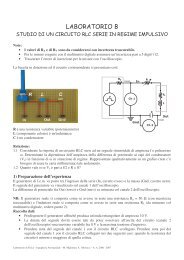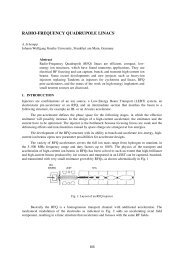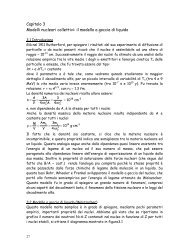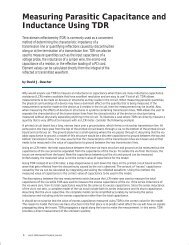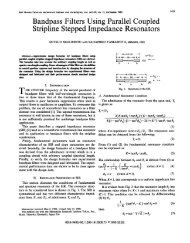244 Capitolo 17 I rivelatori di particelle
244 Capitolo 17 I rivelatori di particelle
244 Capitolo 17 I rivelatori di particelle
You also want an ePaper? Increase the reach of your titles
YUMPU automatically turns print PDFs into web optimized ePapers that Google loves.
Picchi fuga<br />
Picco<br />
fotoelettrico<br />
Spalla compton<br />
Fig. <strong>17</strong>.6 funzione <strong>di</strong> risposta a fotoni<br />
Fig. <strong>17</strong>.7 funzione <strong>di</strong> risposta ai fotoni da 662 keV con <strong>rivelatori</strong> a <strong>di</strong>versa risoluzione<br />
La forma dello spettro riflette le <strong>di</strong>verse interazioni che avvengono nel rivelatore.<br />
Così si vede che nel germanio (spettro a), materiale a Z relativamente alto, prevale<br />
l’effetto fotoelettrico (picco) rispetto all’effetto compton (spalla continua), mentre<br />
nello scintillatore organico (spettro b), che è un materiale a basso Z, lo scattering<br />
compton è <strong>di</strong> gran lunga dominante, tanto che solo questa <strong>di</strong>stribuzione è presente<br />
nella funzione <strong>di</strong> risposta.<br />
Se il rivelatore è usato per misurare uno spettro non monocromatico S(E’) <strong>di</strong> fotoni,<br />
la <strong>di</strong>stribuzione delle ampiezze <strong>di</strong> impulso h(E) sarà data dalla convoluzione dello<br />
spettro <strong>di</strong> energia dei fotoni S(E’) con la funzione <strong>di</strong> risposta R(E,E’):<br />
248


